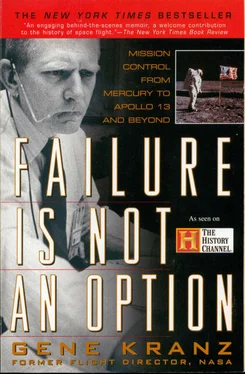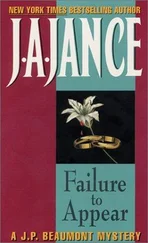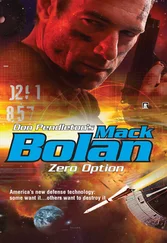Of course, Alan Shepard walked on the Moon and left behind two souvenirs for some future explorers to find. Somewhere in the craters of the Moon are two golf balls, the first ever hit in outer space. He attached the head of a Spaulding 6-iron to a tool used to scoop up lunar soil. This was done for the highly scientific purpose of seeing how far a golf ball would travel in gravity that was one sixth the Earth’s. Actually, he duffed his first shot. “It got more dirt than ball,” he confessed to our controllers.
“That looked like a slice to me, Al,” came the reply.
His second shot traveled, by his estimate, “miles and miles.” The experiment did not appear on anyone’s manifest, but Shepard had cleared it with Deke Slayton. The agreement was that he would do it only if the landing had gone well, and it had. Years later, Al would reflect, “I’m probably a lot more famous for being the guy who hit the golf ball on the Moon, than I am for being the first American in space.”
After the post-mission debriefing, Mitchell invited Thorson and several members of the Trench to dinner. Mitchell, the astronaut who be lieved in psychic phenomena, said that he knew moments before the call that Thorson was going to have the crew cycle the landing radar circuit breaker. Griffin and Thorson were never sure whether Ed was kidding them or not. They were just happy it all worked out.
After the debriefing, Shepard took Griffin aside and confided, “I had come too far to abandon the Moon. I would have continued the approach even without the radar.” On Apollo 14 the error in the LM computers’ knowledge of the actual altitude was almost 4,000 feet before the landing radar data update. With an error this great in the computer, Griffin and the Trench were convinced Shepard would have run out of fuel before landing. But everyone who knew Al never doubted he would have given it a shot. We also never doubted he would have had to abort. The fuel budget was just too tight.
In the three Moon landings, the crews and controllers had become masters of improvisation. With three lunar missions to go, we were pretty cocky, feeling that there was no emergency we could not handle and nothing that would defeat us.
21. WHAT DO YOU DO AFTER THE MOON?
One morning in the spring of 1971 Gerry Griffin walked into my office. Briskly, he said, “The 15 crew thinks it would be good for you to take a break and get out of this stuffy cell. How would you like to go on the next field geology trip with the crew and myself?”
I felt my pulse speed up a bit. This was something new, something different, something pure fun. I knew nothing of field geology, but since we had won the race to the Moon, the shift to lunar science dominated much of our effort. This trip might provide an opportunity to get smart on a new aspect of the business. Lately, I had spent much of my time with the lunar scientists and, although they were much older than my controllers, they had a similar kind of enthusiasm, energy, and commitment to the future of manned spaceflight. Knowing how important the data collected in the Apollo missions would be to our understanding of unknowns like the formation of the solar system, I made sure that my controllers served them well in the planning and execution of their experiments. So when they asked me to work with and learn from them, I jumped at the chance.
The field geology trips provided the practical training ground to complement the astronauts’ classroom training. By their nature, astronauts were curious, and many became dedicated to studying the space sciences. Scott, Griffin, and I made for a colorful trio, to put it mildly. All three of us had flown jet fighters. Scott could have served as a poster for astronaut recruitment. He and Griffin shared a cheery exuberance, a perpetual optimism, and a zest for their work.
The field sites were the laboratories for the astronauts preparing to explore the lunar surface. No terrestrial site could replicate the lunar surface, but there were locations where the rugged terrain could provide conditions similar to those found on the Moon. While training the astronauts, the geology instructors used sites that covered the globe, from the volcanic areas of Iceland to the Grand Canyon, from the mountains of New Mexico to the craters of Hawaii. This training would be vital in selecting the materials to be returned to Earth from the Moon and in answering such questions as the Moon’s age and composition.
I had first met the lunar surface science teams in the conferences to set up their operating structure. I got to know more of them when my Flight Control Division inherited the operation of the Experiment Packages placed on the Moon during each lunar mission.
Our scientists didn’t pay much attention to bureaucratic structure. They wanted to work directly with the crews and controllers to establish a mutual understanding and supportiveness that would make their work on the Moon much more productive.
No one among them impressed me more than Lee Silver. He stood out as we were setting up the surface science rooms, and again during the skull sessions at the apartment of Jack Schmitt. Silver had taught Schmitt as a student at CalTech, and it was obvious they shared the same passions. Silver’s academic credentials were formidable, but the man was even more impressive. You can tell great teachers by their demeanor, how they talk, how they always seem effortlessly in control. Silver appeared born to roam the deserts and mountains, reading the land.
William Muehlberger, from the University of Texas, had the same characteristics. Each geologist approached his work passionately; you felt this passion when you were around them. Schmitt, Silver, and Muehlberger inspired and motivated others much in the same way as my other great teachers like Harry Carroll at McDonnell in St. Louis, Jack Coleman in flight training, Ralph Saylor at Holloman, and Chris Kraft in the MCC, all supremely confident and capable leaders and teachers.
Since I had trained in fighters at Nellis Air Force Base in Nevada, I was familiar with the general terrain as our helicopter lifted off at dawn for the flight to the north end of Frenchman’s Flat, ninety miles northwest of Las Vegas. I had flown over this area en route to the gunnery and bombing ranges but I had never really looked closely at the surface. From the helicopter, I was amazed at the results of the nuclear tests that had pockmarked the desert as far as the eye could see, the craters a myriad of desert colors, the rocks and boulders arrayed from the blast point. Flying low over the area, I imagined this was what the surface of the Moon might have looked like, except for the colors, as Armstrong and Aldrin described it during and after the landing.
The bond between teacher and student astronaut was clearly evident on the way to the site as Silver and his students engaged in a lively Q&A session. There was not a wasted moment from the time we crossed the snowy mountains and descended to the test site.
The Apollo 15 crew, Scott and Irwin, attacked their role as surface geologists with the intensity and enthusiasm they demonstrated in learning to fly a new spacecraft. To them, the surface experiments were just another form of flight test. They were exploring a new world full of riches for the scientists, and were in competition with their predecessors and themselves.
Griffin and I were really just along for the ride, but we found out quickly that Silver had other ideas. After a brief summary of the training objectives, Lee gave me a quick course in field geology 101, then sent me off to find as many different materials as possible within walking distance of our landing site. I had no clue where to start, but I felt obligated to give it my best shot. Griffin tagged along with the crew, listening as Silver laid out their project for the morning. I learned to use my eyes to detect subtle changes in hue, composition, and texture of the land… to see the parts and assemble the whole, then to work it in reverse, striving always for the big picture, looking for cause and effect. After Silver’s brief training, I could visualize the great collisions as the meteors showered the Moon, instantly forming the craters and hurtling the rocks and boulders enormous distances in the low gravity of that airless sphere.
Читать дальше












